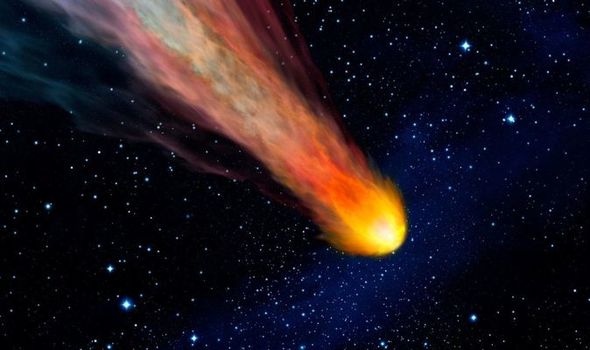
A fireball was spotted in the night sky above north-eastern Mexico on Tuesday, as Hurricane Delta made landfall in the Yucatán Peninsula and several minor earthquakes struck the country.
The fireball was most visible above the states of Nuevo León, Coahuila and Tamaulipas, which border the U.S., around 10:14 p.m. local time, according to the Global Atmospheric Monitoring Agency—part of Mexico’s Institute of Geological and Atmospheric Research.
Some amazed eyewitnesses—as well as some security cameras, webcams and doorbell camss—managed to capture footage of the fireball as it blazed through the atmosphere.
Cameras in Monterrey—the state capital of Nuevo León—captured images of the fireball briefly illuminating the night sky above the city.
Ahí les va video del meteorito donde si se aprecia, grabado por una de las cámaras de @FER_GV #Meteorito #mty @Cicmty @aztecacomunidad @_LASNOTICIASMTY @MauroMoralesMtz @abimaelsalas pic.twitter.com/2sJUTe21Pw
— Isacar Leal (@isagol_) October 7, 2020
Fireballs are unusually bright meteors—the streaks of light that appear in the sky when small pieces of asteroids or comets enter the Earth’s atmosphere and burn up. If these objects avoid completely disintegrating and manage to reach the ground they are known as meteorites.
Local reports suggest that the meteorite fell near Ciudad Victoria, the capital of the state of Tamaulipas.
#AHORA ☄️Se investiga la caída de un posible #Meteorito en un ejido de Ciudad Victoria, #Tamaulipas, pobladores del lugar dieron el reporte del avistamiento de un cuerpo luminoso que caía del cielo la noche del martes, el mismo se vio previamente en Monterrey. pic.twitter.com/A3NDWU0nMD
— Tv Azteca Jalisco (@TVAztecaJalisco) October 7, 2020
Mexican news outlet Milenio reported that the meteorite set fire to bushes in the area where it fell, with local firefighter teams responding to the incident.
#Galería | Se reportó la caída de un meteorito en un ejido cercano a Ciudad Victoria, Tamaulipas https://t.co/AhyPGG5hvd pic.twitter.com/oW2K3bDKXY
— Milenio Tamaulipas (@MilenioTam) October 7, 2020
#Galería | Se reportó la caída de un meteorito en un ejido cercano a Ciudad Victoria, Tamaulipas https://t.co/AhyPGG5hvd pic.twitter.com/oW2K3bDKXY
— Milenio Tamaulipas (@MilenioTam) October 7, 2020
The fall of the meteorite came as Hurricane Delta made landfall in Mexico’s Yucatán Peninsula, bringing winds of around 110 miles per hour.
The Category 2 hurricane struck the coast in between the popular tourist resorts of Cancún and Playa del Carmen, accordion to the U.S. National Hurricane Center (NHC.)
After passing the Yucatán, Delta is predicted to move northwards toward the U.S. Gulf Coast as it grows in size, “where there is an increasing likelihood of life-threatening storm surge and dangerous hurricane-force winds beginning Friday, particularly for portions of the Louisiana coast,” the NHC said.
In addition to these natural phenomena, Mexico was also struck by several earthquakes on Wednesday, with 14 measuring 4.0 or more in magnitude on the Richter scale. The most powerful of these, which struck in the southern state of Oaxaca, had a magnitude of 4.3, which is classified as a “light” earthquake. These are often felt but only cause minor damage.
A fireball meteorite, a hurricane, and some small but relentless earthquakes. What’s next for Mexico? More natural news on NewsWeek, Strange Sounds and Steve Quayle. Now if you are looking for supplements to increase your healthy lifestyle please visit Natural Health Source.












Death from above! Face of Mexican ‘Day of the Dead’ symbol ‘the Elegant Skull’ appears in volcanic ash cloud weeks before the annual festival
Ash in a picture of a volcanic eruption has been likened to The Elegant Skull
La Calavera Catrina is the unofficial face of Mexico’s ‘Day of the Dead’ festival
The picture of the Popocatepetl volcano was taken by a local on Wednesday
People online quickly said it was a reminder of the festival, held on Nov. 1 and 2
Can you please expand on this strange sounds i appreciate you
always.